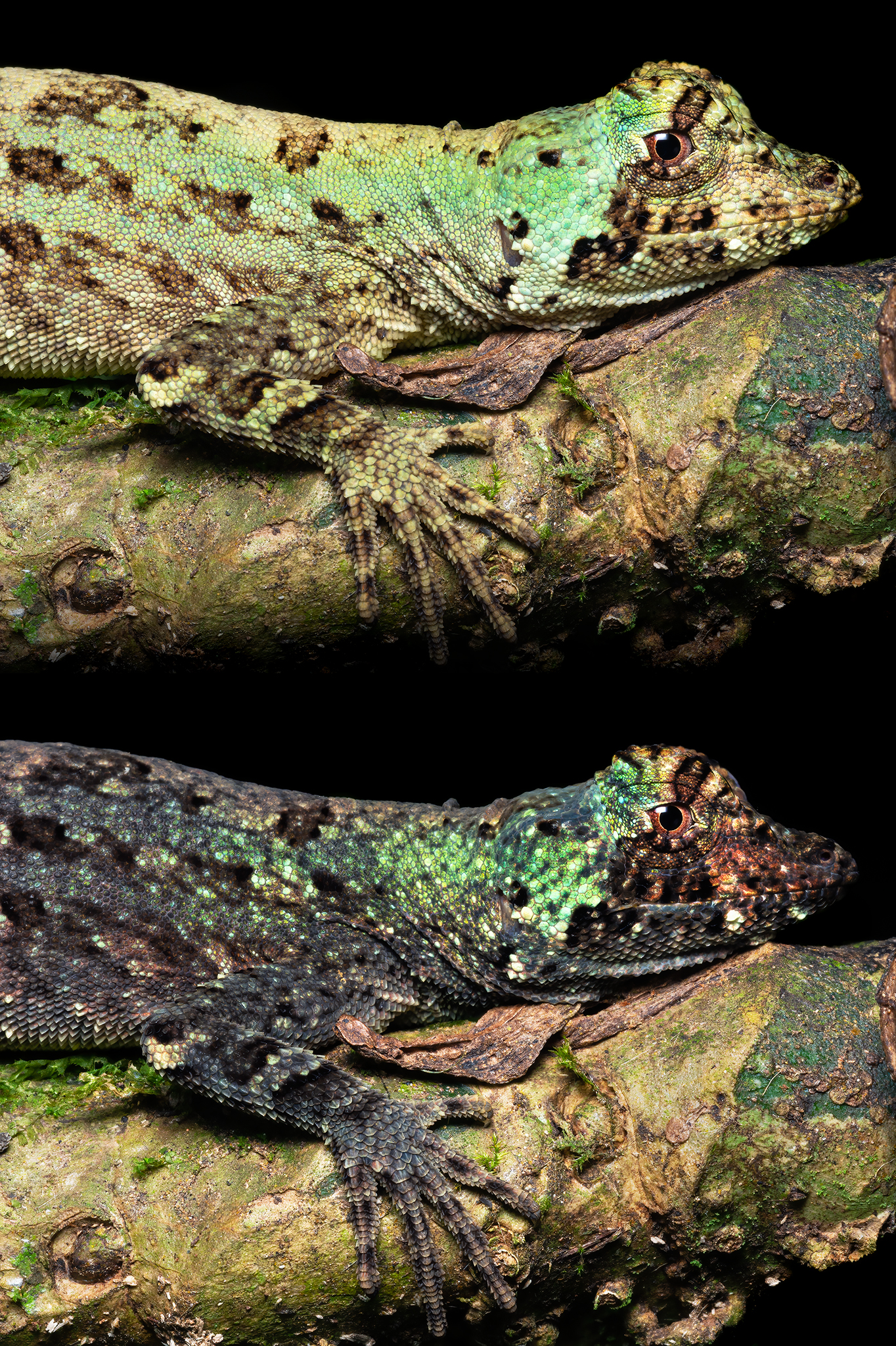One of those moments when nature truly blows you away…
Late one night, in the cloud forests of western Panama, I encountered a green Big-Headed Anole perched on a branch. Already an impressive lizard, I snapped some photos and continued on my way, content with another interesting find that evening.
Around twenty minutes later, I was returning back along the same path and stopped to check if the lizard was still there. To my surprise and utter amazement, it had COMPLETELY CHANGED COLOUR.
I know that this is a relatively common thing for some lizards to do, but this was the first time I’d encountered it in real life, and I sat there with my jaw open for a minute or two before composing myself and taking some photos.
Given that the lizard hadn’t moved, I tried to replicate the exact position of my earlier photos as closely as possible.
Many species of reptile are able to change colours by altering how natural pigments such as melanin are distributed beneath their skin. While the chameleon – the world’s most famous colour-changing lizard – uses this ability to camouflage with its surroundings, it’s believed that colour changes in anoles are less voluntary, likely a natural response due to changes in lighting, humidity, temperature and hormone levels.
Whatever the cause, it is a truly spectacular evolutionary phenomenon to witness.
–
Big-Headed Anole (Anolis capito), Reserva Forestal de Fortuna, Panama


